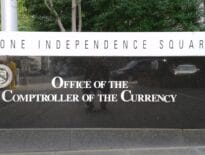
Rick Dimino
Gov. Charlie Baker and his Reopening Advisory Board have laid out a methodical approach to reopening the economy in the coming weeks and months. The challenges from COVID-19 differ by industry, but our approach to transportation will be a common thread that impacts workers across many sectors of the economy and geographic areas of Massachusetts. We cannot restart our economy properly without ensuring equitable access to safe, reliable public transportation.
Clearly, working from home will continue for a large segment of the economy and returning to the office will be a slow process for many workers. However, there are thousands that will need to commute to a job or appointment who are transit dependent or want to choose public transportation.
Failing to provide safe public transportation will jeopardize all of the precautions and protections that businesses and property owners are taking to safeguard their workplaces. Riders should be safe if they are taking the MBTA, but we also want them to feel confident that the MBTA is taking every precaution to prevent the spread of the virus.
MBTA Can Meet Challenge
The MBTA and MassDOT are capable of meeting this high standard, both because of their leadership teams and because of their recent actions.
Over the last two months, the MBTA and Gov. Baker implemented a number of important safety initiatives to protect riders and their own MBTA workforce. The governor issued an executive order requiring face masks or coverings during travel on all MBTA modes, and also while waiting in stations. The MBTA started a rapid cleaning and enhanced decontamination program weeks before non-essential businesses were ordered to close. They are preventing unnecessary contact between drivers and passengers by asking all bus riders to enter through the rear doors of vehicles and have instituted periodic temperature checks for some MBTA workers.
A Better City recently released a report on best practices to protect riders during this pandemic, based on the approaches underway in other transit agencies. There are three steps the MBTA must take in order in order to deliver world-class service during this pandemic.
First, we should all expect that MBTA will continue the frequent and robust sanitization of vehicles and stations. Second, the MBTA must help riders and operators comply with the governor’s order to wear face coverings. Third, the MBTA must help riders comply with physical distancing on MBTA rides. The MBTA has taken some positive steps forward with a communications campaign for riders and increased monitoring of crowded routes; but questions remain on how they will move forward with a full physical distancing program.
Implementing a physical distancing program would mean that the MBTA must set capacity targets on each bus, train or subway car and also where passengers are sitting and standing. A typical MBTA bus that regularly carries 50 passengers seated and standing during rush hour would, under these targets, only be able to hold 10 people if we want every person to be 6 feet apart during a ride. An alternative standard being used in other parts of the world for people wearing masks is only 1 meter, or 3.3 feet, which brings the target bus capacity to 22 passengers. These new target could be challenging during peak commuting times, but the pursuit of physical distancing is a worthy one.
Worldwide Best Practices
Transit systems around the world and in the U.S. are showing best practices that can be the model for the metropolitan Boston area. Several systems have already implemented physical distancing programs on buses, including Chicago, Seattle, Portland, Oregon, and Milwaukee, Wisconsin. In Europe and Asia, there are more robust physical distancing programs already in place. Seat markers and large stickers to show where people are allowed to sit or stand are essential. The Centers for Disease Control and Prevention (CDC) issued guidance calling for closing every other row of seats on buses, subways, and trains.
The MBTA is well-positioned to quickly pilot many of these recommendations, including setting capacity targets and deploying obvious seat markers and signage on vehicles.
The private sector can help the MBTA through an advisory board and partnership consisting of public officials, business leaders and other stakeholders to maximize work–from–home practices, minimize transit usage during peak hours and help “spread the peak” of commuters traveling at morning and evening rush hours. When specific bus or train lines are resulting in crowding on vehicles, the MBTA must also be able to rapidly reallocate resources to deliver higher frequency of service for riders. They will also need to recruit additional bus drivers for this work.
This conversation, monitoring and agency response must continue over each phase of the governor’s reopening plan and beyond.
Finally, implementing these changes will not be easy and there are legitimate civil rights and equity concerns associated with certain enforcement strategies, but the MBTA is capable of thinking creatively and working with community partners to strike a balance in the pursuit of health and safety for all.
A crowded MBTA bus carrying essential workers – our colleagues, family members and neighbors – is a clear sign that we are not doing enough to protect all people in Massachusetts. Pursuing physical distancing on all modes of transportation is the right thing to do and we hope the MBTA takes the necessary steps to keep riders safely apart, and in turn support the reopening of the economy and prevent future spread of the virus.
Rick Dimino is CEO of A Better City.




 |
| 

